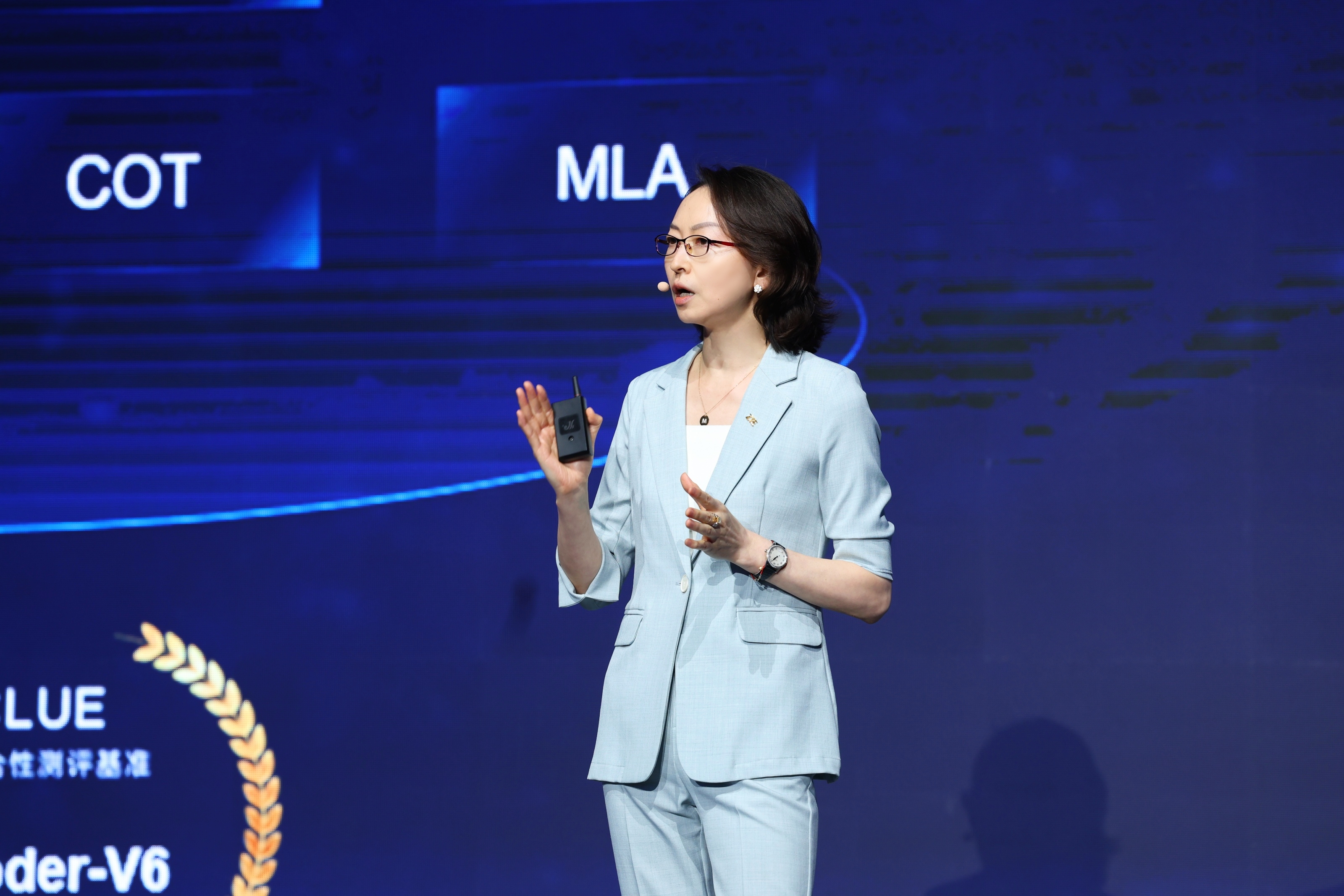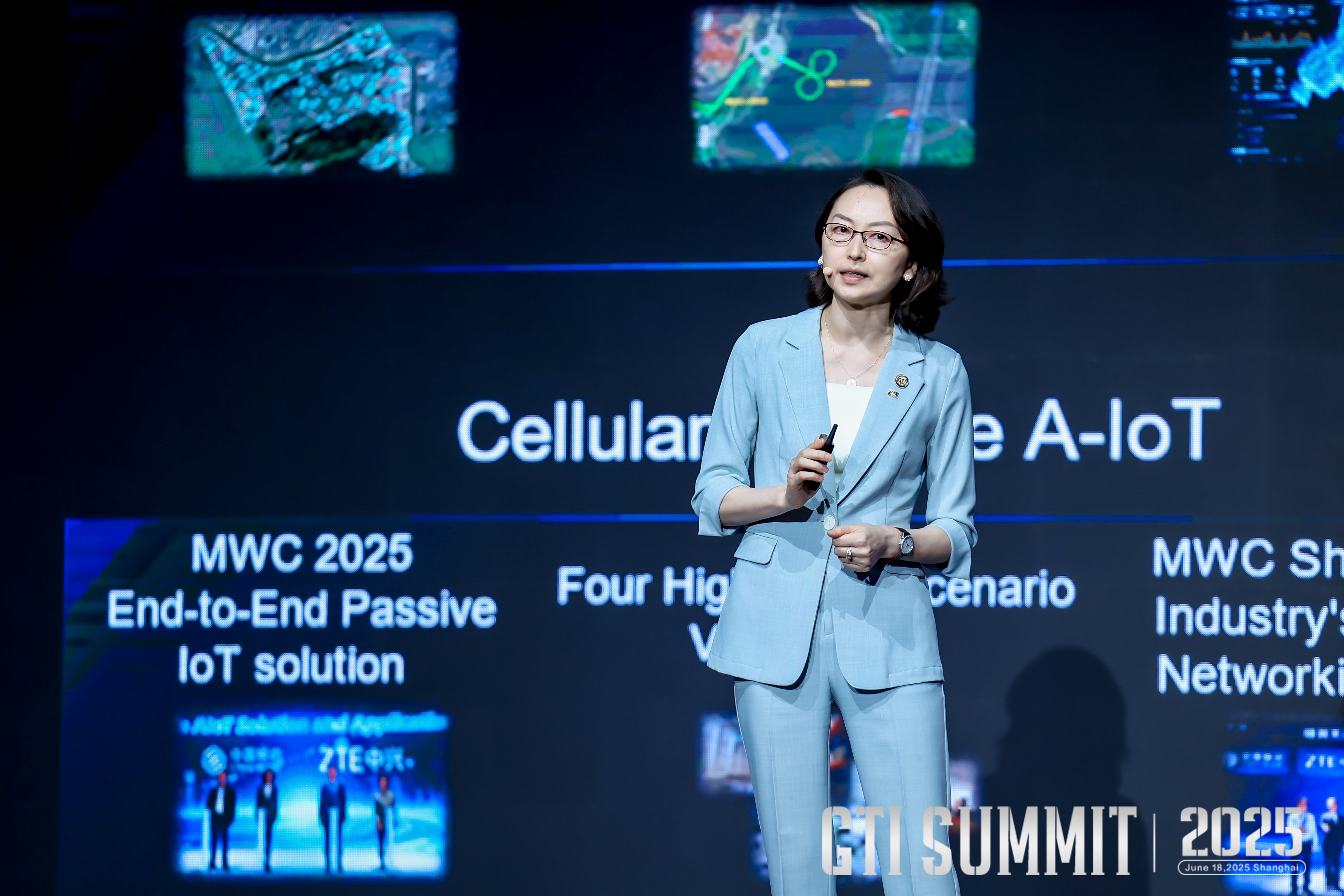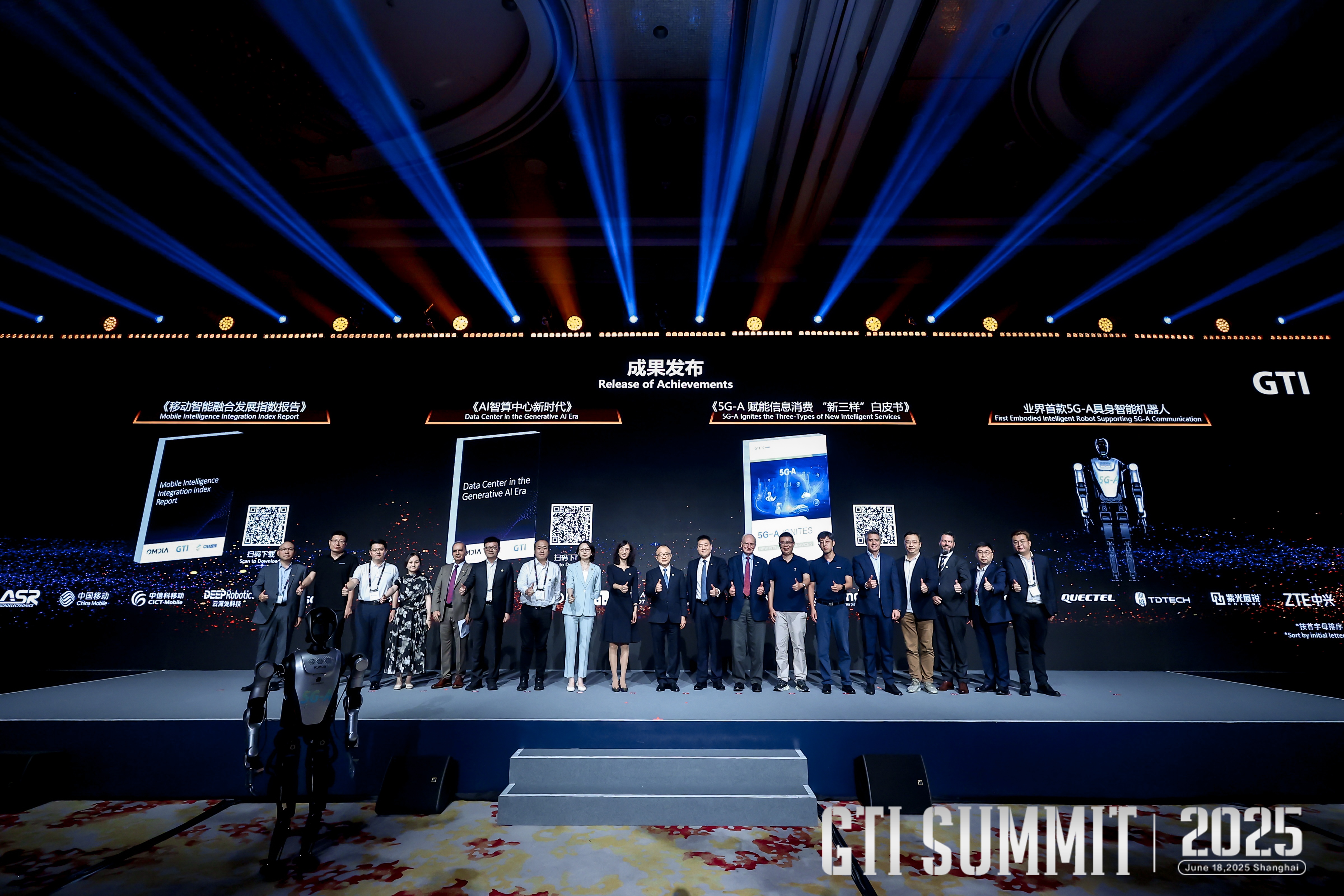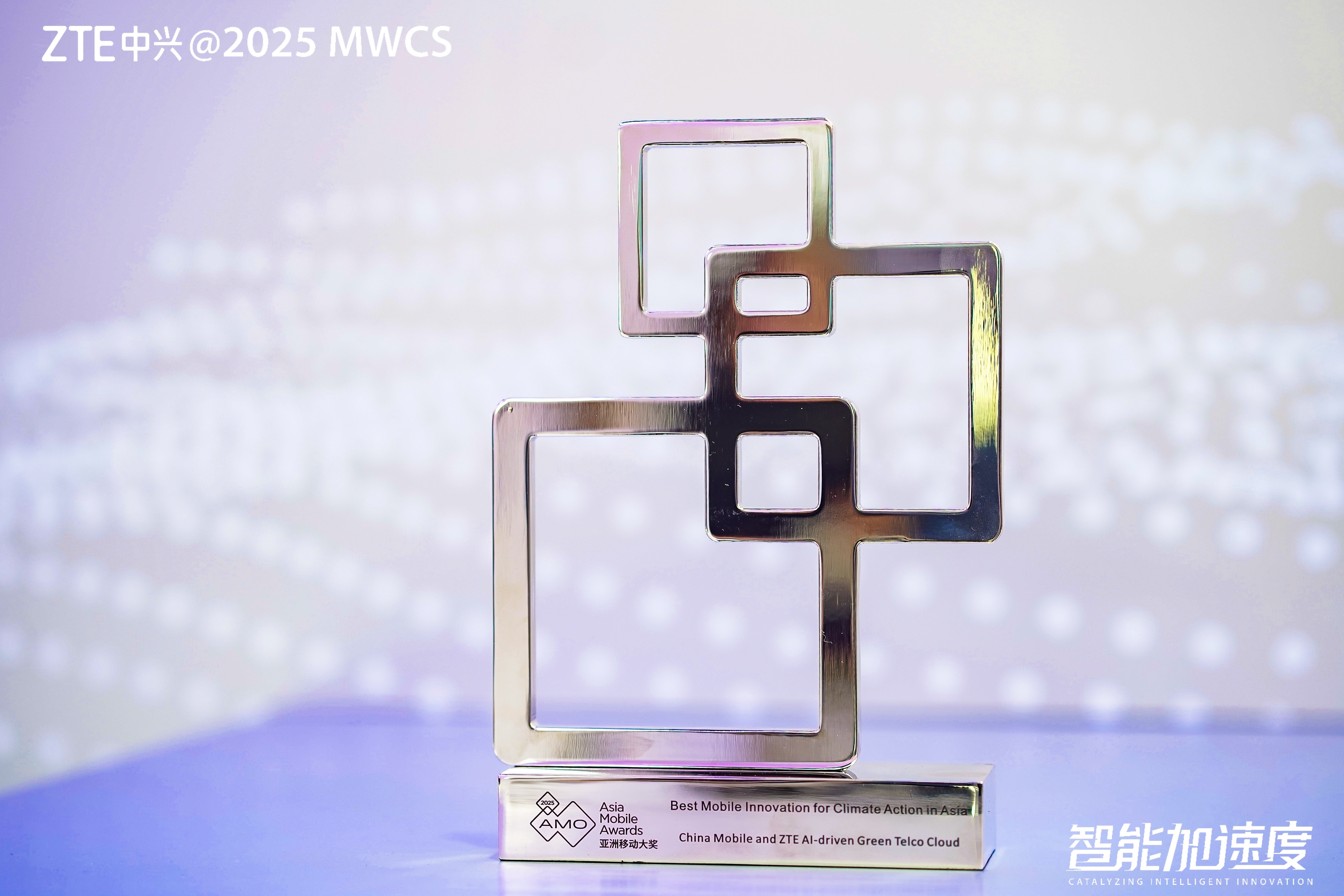ZTE CDO Cui Li at MWC25 Shanghai: Digital and Intelligent Evolution, Usher in a New Era of AI Civilization
- Cui Li delivered a keynote speech at "The Techco Transformation: Pioneering the Next Era of Innovation" session and addressed the GTI Summit during MWC25 Shanghai, sharing ZTE's innovative practices and strategic insights on driving the digital and intelligent evolution
- Cui Li underscored that with large AI models igniting the intelligent revolution, ZTE prioritizes computing infrastructure, algorithm optimization, and edge-terminal collaboration to democratize computing and AI, accelerating intelligent transformation across industries
Shanghai, China, 19 June 2025 - ZTE Corporation (0763.HK / 000063.SZ), a global leading provider of integrated information and communication technology solutions, announced that Cui Li, the company's Chief Development Officer (CDO), was invited to deliver a keynote speech at "The Techco Transformation: Pioneering the Next Era of Innovation" session and addressed the GTI Summit · Shanghai 2025 with the theme of "Envisioning the Future From 5G-A to 6G" at MWC25 Shanghai. She shared ZTE's innovative practices and strategic insights on driving the digital and intelligent evolution of diverse industries amidst the intelligent revolution powered by AI large models.

Cui Li delivered a keynote speech at "The Techco Transformation: Pioneering the Next Era of Innovation" session
In her keynote speech at the "The Techco Transformation: Pioneering the Next Era of Innovation" session, Cui Li shared her insights under the theme "Digital and Intelligent Evolution: Usher in a New Era of AI Civilization". She underscored that large AI models have triggered a global wave of intelligent revolution, driving continuous innovations and breakthroughs across technological iterations and ecosystem development. Emphasizing the enduring priorities within AI advancement, she asserted that the focus will remain unwavering: efficient infrastructure, optimized algorithms, and practical applications. In alignment with this trajectory, ZTE prioritizes computing infrastructure, algorithm optimization, and edge-terminal collaboration. Through relentless innovation, ZTE is committed to advancing the democratization of computing and AI, laying a solid foundation for the intelligent transformation of various industries.
Driven by innovation, ZTE strives to build an intelligent foundation integrating "network, computing, and energy". Centered on data, algorithms, and technology, the company pursues multidimensional evolution to unleash greater intelligent value. Adhering to the core philosophy of "AI for All", ZTE integrates AI deeply with ICT to build a full-stack and full-scenario intelligent computing solution. Additionally, the company is actively driving the adoption of AI across consumer, home, and industry scenarios, accelerating AI democratization. Cui Li stated that ZTE will continue to enhance the competitiveness of its products and solutions, build a more integrated ecosystem with the its partners, and foster deeper convergence and innovation of AI and ICT. Together with ecosystem partners, ZTE aims to address the challenges of privacy, security, and ethics in AI, so as to create an open, collaborative, and trustworthy ecosystem and promote digital and intelligent advancements across all industries, opening up a new era of civilization.

Cui Li delivered a speech at the GTI Summit · Shanghai 2025
At the GTI Summit · Shanghai 2025, Cui Li delivered a speech titled "Intelligent Connectivity, Infinite Future", and was invited to the official release ceremony of China Mobile 5G-A Enablement for the Trifecta of New Information Consumption Services White Paper and other innovation initiatives. In her speech, Cui Li shared ZTE's systematic exploration, practical achievements, and strategic insights across three dimensions: advanced connectivity, intelligent computing for all, and deployment on edges and terminals.
In terms of advanced connectivity, ZTE collaborates with partners to drive network technology evolution from 5G to 5G-A and eventually to 6G, building the neural hub for the intelligent era. Regarding intelligent computing, ZTE focuses on hardware, software, and data to build efficient infrastructure, enable effective implementation, and enhance intelligence. As a result, the company maximizes the value of data, and significantly advances AI for all. As for deployment on edges and terminals, adhering to the "AI for All" philosophy, ZTE has launched a full-stack, full-scenario intelligent solution, contributing to reduced costs, higher efficiency, and lower carbon emissions of the entire society. In her speech, Cui Li emphasized that the world of intelligent connectivity is not a solo of technology, but a symphony played by the entire ecosystem. ZTE will join hands with global partners to further democratize AI and other new technologies, and empower the digital and intelligent transformation of various industries, ultimately shaping a future with ubiquitous connectivity, boundless intelligence, and infinite possibilities.

Cui Li participated in the official release ceremony of innovation initiatives
Below is the full transcript of Cui Li's keynote speech titled "Digital and Intelligent Evolution: Usher in a New Era of AI Civilization":
Digital and Intelligent Evolution: Usher in a New Era of AI Civilization
It's a great honor to be here, on a stage which brings together innovative ideas from around the world and connects the future of technology, to explore with you the boundless potential of a digital and intelligent future. Today, I'll elaborate on how the digital and intelligent evolution is ushering in a new era of AI civilization.
Advancements of AI Large Models
Since the launch of ChatGPT in November 2022, large AI models have ignited a global wave of intelligent revolution. From technological iterations to ecosystem development, innovations and breakthroughs are taking place almost every day. Every six months, a new game-changing product emerges, pushing the entire AI industry forward at an incredible pace.
· Growing attention: Upon its debut, ChatGPT quickly attracted global attention, allowing the public to experience the powerful generalization and emergent abilities of LLMs. Since then, Generative AI has been under the spotlight and become a key focus of industrial development.
· Booming ecosystem: The open-source release of Llama 2 marks a significant step in democratizing AI, triggering the exponential growth in the global innovation ecosystem, and SMEs thus began to join the AI race.
· Modality breakthroughs: Sora has once again amazed the world, speeding up the expansion of LLMs from text to multimodal integration, including images, audio, video, and more. This progress enables AI to gain a deeper and more profound understanding of the real world across multimodal dimensions.
· Cognitive enhancement: OpenAI o1 has revolutionized AI reasoning, transforming AI from merely a "memory tool" to an active "thinker". Its ability to tackle complex tasks, such as mathematics and programming, has dramatically improved.
· AI for all and its application: With key innovations in architecture, algorithms, and hardware-software synergy, DeepSeek-R1 significantly reduces the training and inference costs for state-of-the-art LLMs, and promote AI accessibility through open-source initiatives. Agents thus become a clear direction forward for real-world applications, achieving the ultimate goal of value creation.
No matter how AI technology evolves in the future, the focus will remain on efficient infrastructure, optimized algorithms, and practical applications. In line with this, ZTE prioritizes computing infrastructure, algorithm optimization, and edge-terminal collaboration. Through continuous innovation, ZTE is committed to advancing the democratization of computing and AI, laying a solid foundation for the intelligent transformation of various industries.
Efficient and Green: Consolidating AI Infrastructure
Bits cannot exist without atoms. Every digital application—including AI—depends on efficient and green infrastructure. The scaling laws continue to drive AI forward, not just in training but now into inference, together with the rapid growth in service scale and real-world application, all resulting in huge demands for hardware and resources. Driven by innovation, we strive to build an intelligent foundation integrating "network, computing, and energy".
In the network field, we are driving an architectural revolution with built-in intelligence. This takes network architecture from traditional dedicated hardware to heterogeneous computing platforms, achieving a shift from "cloud-native" to "AI-native". That is more than just a boost in efficiency—it's a transformation in roles. We're advancing the evolution of AI from being a mere Copilot to an Agent that can make decisions autonomously. By doing so, we aim to reshape network operations and service models, and unlock new business models for intelligent network applications.
As for computing, we empower value co-creation through an open ecosystem. ZTE has developed a computing framework based on the concept of openness and decoupling, providing a full-stack, end-to-end solution that covers intelligent computing servers, general-purpose computing servers, high-performance storage, switches, and AI all-in-one machines. These offerings cater to diverse needs in various scenarios, making computing accessible for all. Additionally, ZTE AIS, a guided training and inference platform, transforms our technical expertise and engineering capabilities into tools. The platform enables centralized management of both computing power and algorithms, making it easier, faster, and more cost-effective to develop and manage domain-specific models and applications. Through the open-source Co-Sight AI agent factory, we simplify the creation of customized AI agents, shifting AI development from a "technological race" to "value co-creation", and thus unlocking new potential across industries.
In terms of energy, we offer green and low-carbon solutions for intelligent evolution. With modular and prefabricated designs, the OTD time is shortened by 40%. Our innovative intelligent busbar pooling technology allows for flexible power density configurations, ranging from 8 to 120 kW per cabinet. To address the uncertainties in future business demands, our prefabricated power modules are designed to support both AC and DC loads, while the intelligent computing MDC meets both general-purpose and intelligent computing requirements. Moreover, we integrate AI-driven autonomous learning and system-wide sensing capabilities to continuously improve operational efficiency, reducing energy consumption with a CLF reduction of over 10%. In this way, we ensure efficient deployment, flexible scalability, and sustainable operations of our data centers.
* CLF: The ratio of power consumption of cooling equipment to that of IT equipment in a data center.
Multidimensional Evolution: Unleashing Greater Value of Intelligence
For LLMs, scale isn't everything—getting larger doesn't always mean getting smarter. Continuous enhancement of data, algorithms, and technology are essential for higher efficiency. The Wirth's Law states that software is getting slower more rapidly than hardware is getting faster. So, besides upgrading infrastructure all the way, we must optimize data and algorithms.
Data is like fertile "soil". Its volume, purity, and security decide how well AI as a plant can grow, directly setting the upper limits of model capabilities. We build standardized sample libraries to solidify the data foundation, leverage automated labeling tools to enhance data governance, and use knowledge graphs for AI to connect and understand facts. Moreover, we generate high-fidelity synthetic data when scenario samples are scarce. This ensures the integrity, accuracy and generalization of our datasets, thus unleashing the full potential of higher-level AI capabilities.
LLMs continue to evolve like towering trees, more efficiently converting nutrients from the data soil into cognitive and decision-making capabilities. This further enhances the accuracy and explainability of feedback results.
For example, in terms of extending the boundaries of cognition, Retrieval-Augmented Generation (RAG) combined with Multimodal Learning (MM) can fill knowledge gaps, break through just one perceptual dimension, and effectively enhance the breadth and coverage of the input, enabling AI to "see more".
As for enhancing learning accuracy, methods such as Reinforcement Learning (RL), Mixture of Experts (MoE), and Knowledge Distillation (KD) are used. Based on mechanisms such as reward-based optimization, task focusing, and knowledge compression, these approaches collectively ensure the accuracy of outputs. This significantly reduces hallucinations in content generation, allowing AI to "learn accurately".
When it comes to deep understanding, Chain of Thoughts (CoT) organizes multi-step reasoning logic, Tree of Thoughts (ToT) explores branching paths for decision-making, and Multi-Level Attention (MLA) enhances the ability to capture relationships across multi-scale, multi-level features. Together, they empower models to profoundly analyze the fundamental patterns within data, facilitating AI to "understand deeply".
It's worth noting that ZTE Nebula Coder-V6 has successfully validated the aforementioned technological approaches. Through systematic training and optimization, it tied for first place in reasoning capability and won the silver medal in the overall rankings at the Chinese large models evaluation by SuperCLUE in May 2025. It fully proves the feasibility and engineering value of enhancing AI capabilities through technological innovation.
Organized AI is like the "tropical rainforest". It creates more powerful and multifunctional agent systems by enabling convenient invocation and seamless collaboration of AI agents, external tools, APIs, and databases, thus maximizing the value of the ecosystem. Take Anthropic's Model Context Protocol (MCP) proposed at the end of 2024 and Google's Agent2Agent (A2A) released in April this year as examples. Both are driving the formulation of commonly recognized standards for AI agent collaboration, just like the HTTP protocol, accelerating the standardization and decentralization of AI applications. MCP allows AI agents to easily integrate with external tools, APIs, and data sources, akin to a universal Type-C connector, achieving plug-and-play functionality. This advancement propels AI agents to evolve from language-based systems to those capable of interacting with both the digital and physical worlds. On the other hand, A2A enables seamless communication and collaboration among different AI agents, driving them toward Organized AI. This development equips AI agents with stronger capabilities for complex task decomposition, autonomous decision-making, and multi-step collaboration, bringing them closer to human-like organizational intelligence.
The "last mile" of phygital convergence is bridged by the adaptability to real-world scenarios. To cover the last mile, we leverage tool-based engineering capabilities to lower the barriers for industry applications. Through the collaboration of large and small models, we strike a balance between the efficiency and accuracy required in general cognition and verticals. By incorporating domain-specific knowledge, we address the semantic gap between general-purpose AI and vertical scenarios. Based on digital twins, mappings between physical and digital worlds are created within milliseconds, enabling AI to precisely respond to the diverse needs of individuals, households, and industries. This continuously improves the intelligent experience across multidimensional scenarios.
Deployment on Edges and Terminals: Accelerating AI Democratization
Better for all — that's what really matters. While ChatGPT sparks a craze by bringing the appeal of AI to consumers, DeepSeek significantly advances the application and development of edge AI and vertical AI with its efficiency, cost-effectiveness, and open-source nature. Adhering to the core philosophy of "AI for All", ZTE integrates AI deeply with ICT to build a full-stack and full-scenario intelligent computing solution. Additionally, we are actively driving the adoption of AI across consumer, home, and industry scenarios, contributing to greater efficiency, reduced costs, and lower carbon emissions in society.
For consumers, upholding the "AI for All" philosophy, ZTE goes beyond the limitations of traditional apps. By integrating cutting-edge AI innovations into auditory, visual, and other sensory experiences, the company is redefining its product offerings, such as smartphones, headphones, and PCs. ZTE continues to enhance AI-driven interactive experiences in all scenarios, shaping a new paradigm of smarter and more convenient digital lifestyle.
For homes, we focus on four core products—AI home networks, computing, smart displays, and robots—aiming to create a fully AI-powered home ecosystem.
· FTTR + Wi-Fi 7 enables seamless network coverage and dynamic resource scheduling;
· All-optical smart displays act as a super brain embedded with local computing and terminal-cloud collaborative models;
· 5G flexible displays and 2-in-1 cloud PCs facilitate cross-device interactions;
· AI robots, interactive and considerate companions, offer children care and health reminders.
By reshaping home experiences with a "perception – computing – interaction – execution" closed loop, we enable diverse perceptions and emotional connections, driving the shift of smart living from passive responses to proactive services.
For industries, efficiency, convenience, and security are always the core demands. In the R&D field, we have developed Nebula Coder Model. It enables such capabilities as code completion, logical reasoning, cross-language conversion, and R&D efficiency analysis, boosting overall R&D efficiency by 10%. In the industrial production field, the Nebula Industrial Model shortens the intelligent production scheduling cycle from 12 to 1.5 hours. In the telecom field, the Nebula Telecom Large Model reduces costs and improves efficiency of network operations while achieving a 10–15% increase in energy efficiency. Currently, ZTE's intelligent computing solutions have empowered more than 18 vertical industries and been applied in over 100 exemplary cases, receiving widespread recognition. These practices in various sectors fully demonstrate the significant advancements that AI technology brings in efficiency, accuracy, and value creation.
Openness and Collaboration: Empowering the New Era of AI Civilization
The prosperity of AI will further democratize knowledge and intelligence, bringing benefits to the entire human society. As a "Driver of Digital Economy", ZTE builds open AI infrastructure to strengthen the digital foundation, creates a development platform that transforms engineering capabilities into tools to make AI technologies more accessible, and drives the adaptation and application of AI across various industries.
In the future, we will continue to enhance the competitiveness of our products and solutions, build a more integrated ecosystem with our partners, and foster deeper convergence and innovation of AI and ICT. At the same time, together with over 1,000 ecosystem partners, we aim to address the challenges of privacy, security, and ethics in AI, so as to ensure Tech for Good.
Let's work together to create an open, collaborative, and trustworthy ecosystem and promote digital and intelligent advancements across all industries, opening up a new era of civilization.



